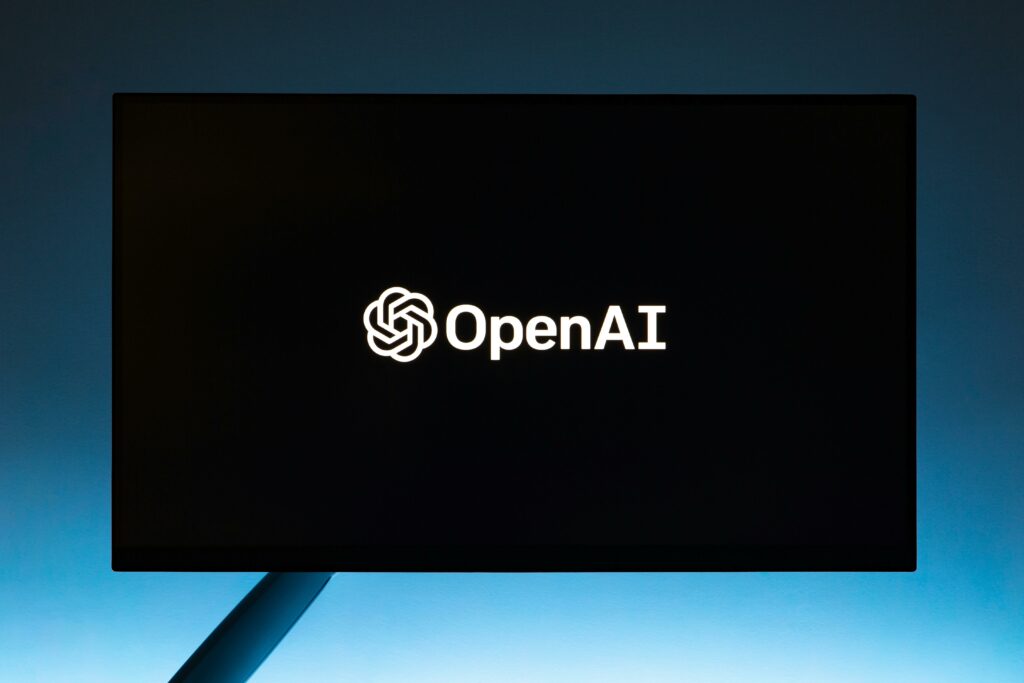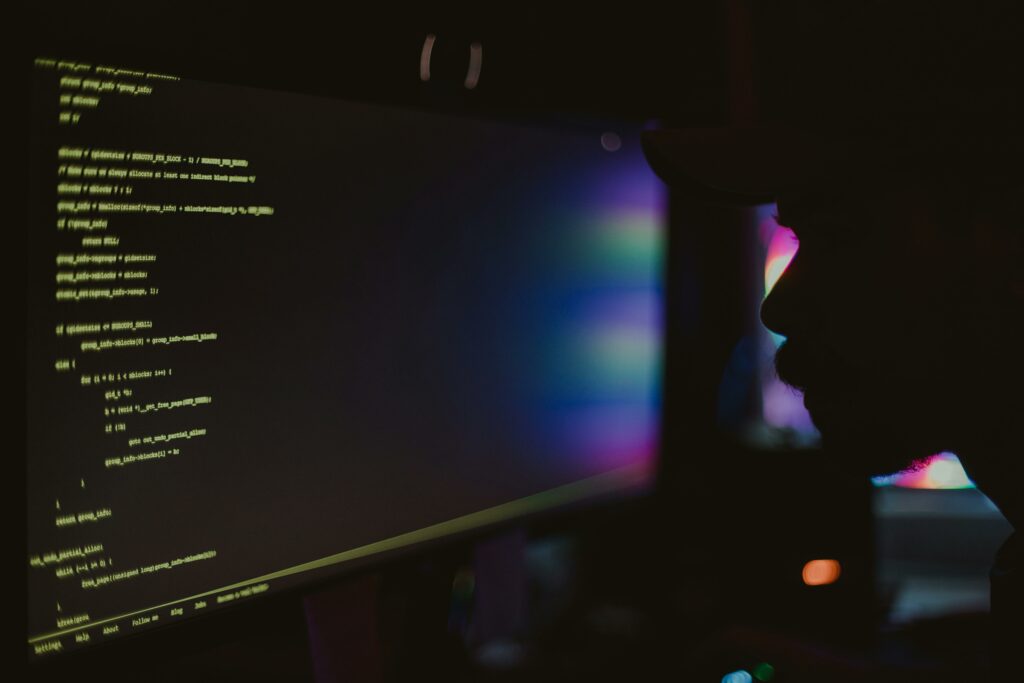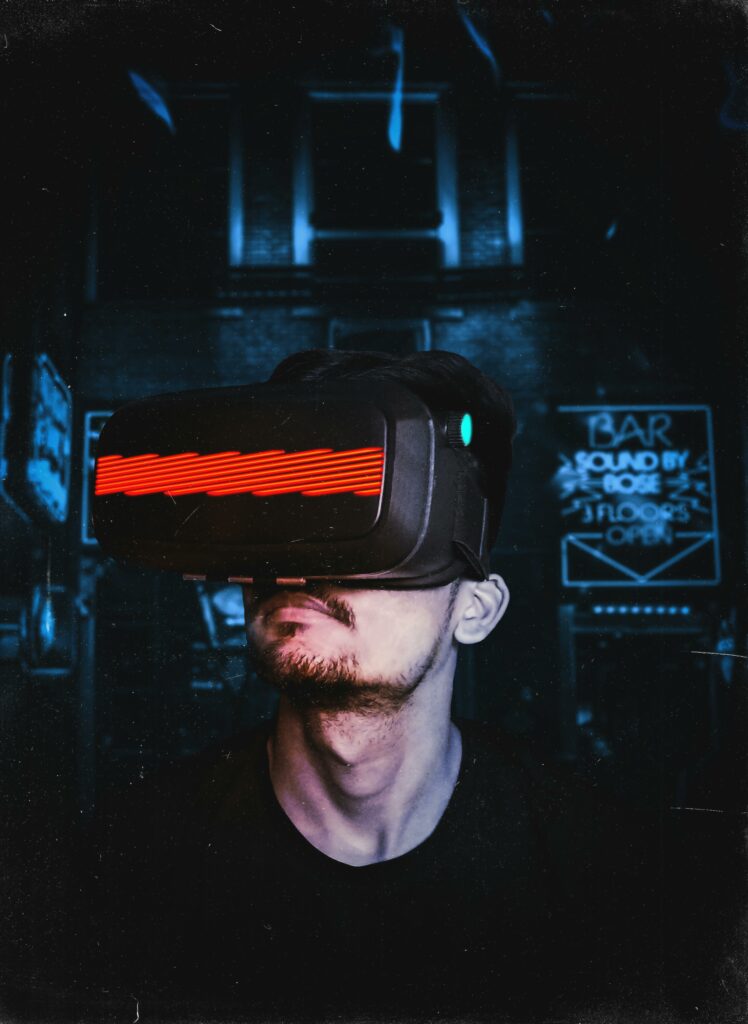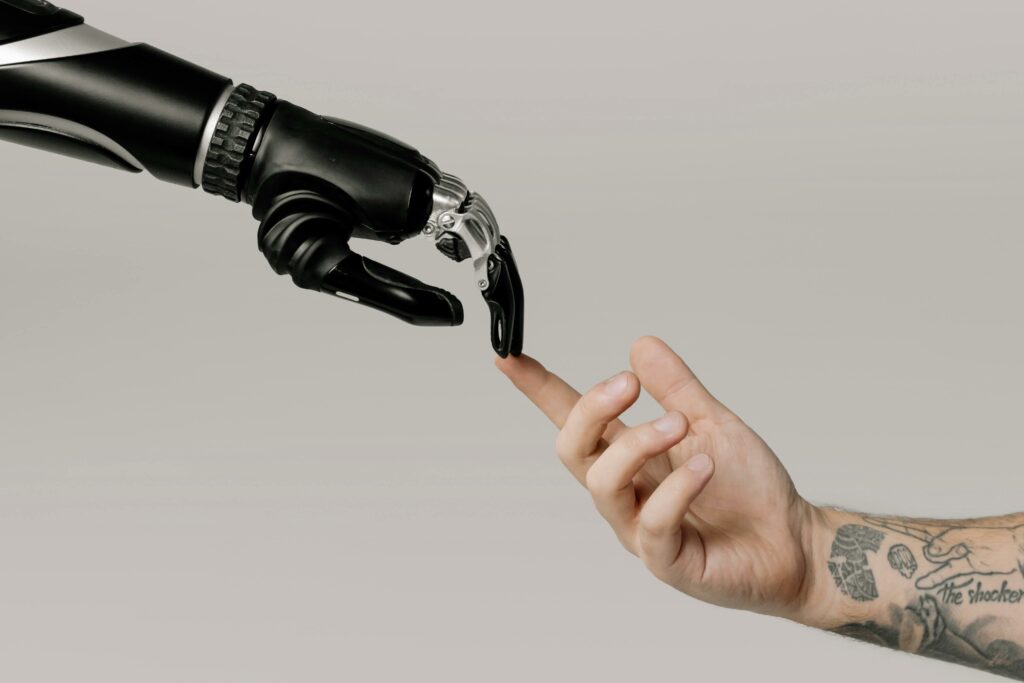Newsletter Subscribe
Enter your email address below and subscribe to our newsletter

Two-thirds of individuals anticipate significant job replacements by AI (Artificial Intelligence) Innovations within the next five years, posing the question: are you prepared or simply observing from the sidelines?
A recent survey conducted by Word Finder reveals a growing adoption of AI, with 19%-20% of respondents incorporating it into their routines weekly or even multiple times a week. Surprisingly, another 10% integrate A.I. monthly. Interestingly, the pervasive use of AI Technology in our daily lives is often overlooked, especially through routine interactions with mobile devices.
While many remain passive users, utilizing AI without conscious acknowledgment, a notable segment actively engages with advanced technologies. Platforms such as ChatGPT, MidJourney, Synthesia, Jasper, Lensa, Studio D-ID, and Descript, which currently shape the industry, attract early adopters. Remarkably, 46% of individuals confess to using these tools only once or twice, highlighting a mix of curiosity and cautious experimentation within the AI landscape.
So in this article, here are 10 AI innovations that will change our lives this 2024 and beyond.

As technology advances and artificial intelligence continues to evolve, the possibilities for how we interact with machines are expanding at an incredible rate. One such example is ChatGPT, a large language model trained by OpenAI. ChatGPT has already made waves in the world of natural language processing, helping people to communicate with machines in a more human-like way.
ChatGPT, an artificial intelligence language model, excels at comprehending and generating human-like text responses across a diverse array of queries. Presently, it adeptly engages in conversations, answers factual questions, crafts humor, and even generates creative writing prompts. The model’s learning capacity enables it to enhance its performance over time as it processes more data.
Remarkably, in January 2023, ChatGPT garnered an impressive average of 13 million unique daily visitors, reflecting a substantial increase from December 2022.
However, like any technology, ChatGPT has its constraints. While it consistently produces coherent and contextually relevant responses, there is occasional potential for inaccuracies or inappropriate outputs, particularly in the face of incomplete or ambiguous input. Additionally, understanding colloquial language, sarcasm, or other non-literal expressions poses a challenge for ChatGPT in everyday conversations. Moreover, the model may generate repetitive or irrelevant responses when confronted with topics outside its training scope.
In summary, while ChatGPT’s existing capabilities are commendable, achieving a complete replication of human-like conversations remains a distant goal. Acknowledging these limitations, the ongoing progress in natural language processing and machine learning holds promise for ChatGPT to further refine its abilities and broaden its applications in the future.

For those unfamiliar, DALL-E stands as a cutting-edge AI Innovation revolutionizing image generation through textual descriptions. Its impact has been nothing short of transformative, bringing unforeseen benefits to various domains.
If you haven’t had the chance to explore OpenAI’s DALL-E 3, you might be wondering about its potential applications. In this article, we’ll delve into five distinct use cases of DALL-E 3, shedding light on how it’s reshaping industries and workflows.
DALL-E, crafted by OpenAI, is a deep learning model merging computer vision and natural language processing. Trained on diverse datasets encompassing photographs and descriptions, it detects objects and patterns to generate images in various styles. With this backdrop, let’s explore the intriguing applications of this AI Innovation.
Utilizing DALL-E 3 for logo creation presents an exciting opportunity. The generated images are entirely yours, eliminating the need for permission from OpenAI. For instance, you can kickstart your business by designing a logo. If unsatisfied, prompt DALL-E 3 to refine it based on your textual description, tailoring it to fit your brand’s essence.
Beyond logos, DALL-E 3 facilitates the creation of diverse visual content for marketing and advertising. Generate images and videos for social media posts or website visuals without investing extensive personal time or hiring additional help. Consider creating a compelling data science bootcamp flyer effortlessly.
Whether you possess an artistic eye or seek assistance in generating art, this A.I Technology has you covered. It not only creates art but can guide artists in initial sketches, helping them develop unique pieces. This not only provides a premade canvas for creatives but also saves time and money on product prototypes. The possibilities extend to exploring new ideas and embracing diverse artistic styles.
DALL-E’s capabilities extend to instant comic creation, allowing you to choose themes and create an entire comic within seconds. Additionally, it serves as a cost-effective solution for book covers, offering customization options to match your vision.
Teachers can leverage this A.I Technology to enhance educational material with visual aids, creating engaging content for students. For instance, in a biology lesson focusing on lung conditions, DALL-E can generate detailed images showcasing the impact of heavy smoking on lung health over time.
These highlighted use cases merely scratch the surface of DALL-E’s potential. Whether improving workflows, unleashing creativity, or enhancing learning materials, DALL-E offers a glimpse into the transformative power of AI Technology. If you’ve explored unique applications with DALL-E, we’d love to hear about them—drop a comment below!

Stable Diffusion stands as another potent latent text-to-image diffusion model, exhibiting the remarkable ability to craft photo-realistic images based on textual input. This cutting-edge technology not only enables autonomous creativity but also empowers countless individuals to effortlessly produce stunning art within mere seconds.
As a deep learning model, Stable Diffusion operates within the context of the ongoing AI spring—an era marked by rapid advancements in artificial intelligence technologies. Specifically designed to transform text descriptions into captivating visual representations, Stable Diffusion exemplifies the progressive trajectory of AI innovation, contributing to the democratization of artistic expression on a global scale.

The creation of top-tier video content often demands significant time and financial resources, involving expenses for performers, high-end cameras, studio spaces, and meticulous editing. Synthesia.io emerges as a groundbreaking solution, allowing businesses and enthusiasts to effortlessly generate AI-driven videos without compromising on quality. Positioned as the pioneer in business video production, Synthesia.io redefines the conventional recording process by seamlessly integrating artificial intelligence.
Synthesia’s video creation tools offer a spectrum of capabilities, including customizable avatars, diverse video models, and multilingual support. Users can seamlessly blend various templates with avatars to discover the perfect combination for their needs. In this post, we’ll delve into the features of Synthesia.io to help you evaluate its effectiveness as your AI video creator of choice.
Synthesia.io leverages artificial intelligence to swiftly transform text into speech, enabling users to produce professional-quality films effortlessly. As a frontrunner in A.I. video production technology, Synthesia.io stands out by creating videos entirely through artificial intelligence. By providing readily available AI avatars and voiceovers, it streamlines the process of producing instructional videos, eliminating the need for actors, cameras, and studio filming. Users can modify and update their videos at will, with access to a vast array of languages exceeding 100.
1. A.I Avatars and Custom Avatars
Choose from a diverse selection of over 60 AI characters to serve as narrators for your video, eliminating the need for actors or personal appearances. For those seeking a more tailored touch, Synthesia offers the option to design unique avatars for your brand, albeit as a premium add-on for custom videos.
2. AI Voices
Synthesia provides users with a range of authentic-sounding voices in multiple languages and dialects. The high quality of these voices, generated through deep learning, makes it nearly indistinguishable from human speech. This AI innovative use of artificial intelligence transforms text into speech seamlessly.
3. Professional Video Templates
With more than 50 adaptable templates, Synthesia facilitates the creation of high-quality videos across various themes. Whether for social media content, instructional clips, slideshows, or promotions, users can select professional-looking templates that cater to their specific needs.
Synthesia.io is an ideal tool for individuals and businesses seeking to rapidly create high-quality videos without the need for extensive equipment or resources for traditional filming and editing. Bloggers, advertisers, and those averse to appearing on camera can leverage Synthesia’s capabilities to effortlessly produce impactful content. A free trial offers an opportunity to explore the tool’s potential before committing.
Ever wondered if you could bring your imagination to life in just a few minutes? Midjourney, an AI image generator, makes this possible by transforming textual descriptions into captivating images, even for those without artistic skills. Let’s delve into the workings of Midjourney to unravel the magic behind this generative AI Innovation.
Midjourney represents a powerful example of generative AI innovation, seamlessly converting natural language prompts into visually stunning images. Amid the landscape of machine learning-based image generators, Midjourney has emerged as a major player alongside industry giants like DALL-E and Stable Diffusion.
Accessible through the Discord chat app, Midjourney allows users to effortlessly create high-quality images from simple text-based prompts. Although there is a nominal cost associated with its usage, the low barrier to entry ensures that virtually anyone can leverage its capabilities to generate real-looking images within minutes. Results vary from uncanny to visually striking, depending on the prompt.
Unlike DALL-E, which is backed by OpenAI, Midjourney positions itself as a self-funded and independent project, showcasing impressive results despite its humble origins. The generator is currently Discord-based, but a move to its dedicated platform is underway, eliminating the Discord requirement.
While Midjourney’s closed-source nature prevents a full understanding of its inner workings, the underlying technology involves two key machine learning components: large language models and diffusion models.
Large Language Models: Similar to those used in generative AI chatbots like ChatGPT, a large language model helps Midjourney comprehend textual prompts. The prompt’s meaning is converted into a numerical vector, guiding subsequent processes.
Diffusion Models: A relatively recent addition to machine learning, diffusion models involve gradually adding random noise to a training dataset of images. Over time, the model learns to reverse this noise, recovering the original image. Midjourney utilizes diffusion to turn noise into captivating art.
When a user enters a text prompt, such as “white cats set in a post-apocalyptic Times Square,” Midjourney begins with visual noise, akin to television static. Trained AI models then use latent diffusion to subtract the noise in steps, eventually producing an image resembling the real-world objects and ideas described.
The wait time for an AI-generated image reflects the denoising process’s duration. Interrupting the process prematurely results in a noisy image that hasn’t undergone sufficient denoising steps.
While some AI tools offer nearly unlimited free usage, image generators like Midjourney incur costs due to the significant computing power, specifically GPUs, required for each image generation task. Midjourney’s pricing structure starts at a minimum of $10 per month, providing 3.3 hours of GPU time for around 200 image generations. Higher-end plans offer unlimited images in Relaxed mode, with costs ranging up to $120 per month for 60 hours of fast GPU time.
Considering alternatives from various tech companies, many of which offer competitive AI image generators at no cost, can be worthwhile for those seeking budget-friendly options.
If you’ve ever grappled with the challenges of video creation, Descript might just be your new best friend. Combining transcription and user-friendly video editing, it’s a powerful AI Innovation that simplifies the often daunting process of crafting compelling videos.
Descript seamlessly blends transcription and video editing, making it a unique and versatile tool for content creators. Acting as a transcription tool and an easy-to-use video editor, Descript streamlines the video creation process.
Creating videos with Descript is a breeze. The tool transcribes your video, and instead of traditional timeline-based editing, you edit it as if it were a word document. This approach allows for smooth editing, making the process far more straightforward.
Descript stands out due to its innovative approach. Unlike traditional video editing, where you cut and merge clips on a timeline, Descript simplifies the process by treating the video as an editable text document. This unique method significantly reduces the complexity of video editing.
Descript’s utility extends beyond traditional video creation. It excels in transcribing Zoom recordings, making it valuable for qualitative research. Additionally, Descript can be employed for podcast creation, allowing users to edit and export audio files seamlessly.
Descript’s Pricing Structure:
Descript offers a range of pricing plans to cater to different user needs:
Descript is a game-changer for video creation, providing a user-friendly interface that simplifies the entire process. Whether you’re a seasoned creator or just starting, Descript’s innovative approach and accessible pricing make it worth checking out. Visit descript.com to explore the tool for yourself.

A self-driving car, also known as an autonomous or driverless car, leverages a sophisticated blend of sensors, cameras, radar, and artificial intelligence (AI) to navigate between destinations without requiring human intervention. To be considered fully autonomous, a vehicle must adeptly traverse predetermined routes without human guidance over roads not specifically adapted for its use.
Self-driving cars harness the power of AI technologies. Developers employ vast datasets from image recognition systems, coupled with machine learning and neural networks, to construct systems capable of autonomous driving. Neural networks analyze data patterns, educating machine learning algorithms to identify various elements in the driving environment, such as traffic lights, pedestrians, and street signs.
Google’s Waymo Example:
The U.S. National Highway Traffic Safety Administration outlines six levels of automation, ranging from Level 0 (full human control) to Level 5 (complete autonomy).
Cars with Self-Driving Features
While fully autonomous cars are in development, current consumer cars exhibit varying levels of autonomy. Examples include hands-free steering, adaptive cruise control (ACC), and lane-centering steering.

Augmented Reality (AR) is a transformative technology that enriches the real physical world by integrating digital visual elements, sounds, or other sensory stimuli through technology. Unlike virtual reality, which constructs a distinct cyber environment, AR supplements the existing world, aiming to illuminate specific features, enhance understanding, and extract valuable insights applicable to real-world scenarios.
Evolution and Adoption of Augmented Reality:
AR has evolved beyond a mere marketing tool, gaining tangible benefits for consumers and becoming integral to the purchasing process. Wearable devices, especially smart eyewear, hold promise as breakthroughs for AR, potentially offering a more comprehensive link between real and virtual realms.
Examples of Augmented Reality:
While AR enhances the real-world environment by adding virtual elements, virtual reality immerses users entirely in computer-generated environments. For example, Pokémon Go exemplifies AR, while virtual reality can transport users to entirely fabricated scenes or locations.
Augmented reality finds applications in gaming, product visualization, marketing, architecture, education, and industrial manufacturing, offering interactive and immersive experiences.
AR provides users with heightened, immersive experiences, enriching enjoyment and understanding. Commercially, it boosts brand awareness and sales, making it a valuable tool for various industries.
Due to its integration with the real world, AR may be perceived as more realistic than virtual reality, which relies entirely on computer-generated environments. However, advancements in technology continually enhance the realism of both.

Future of Artificial Intelligence Prostheses:
Touch Prosthetics and Synthetic Intelligent Skin:
Italian Bionic Hand with a Sense of Touch:

As AI innovations integrates into daily life, its presence in biometrics becomes increasingly prevalent. Various industries adopt AI-based tools, from ink pens to refrigerators. In the realm of biometrics, where security standards evolve, AI is revolutionizing popular identification methods.
Vulnerabilities and Challenges:
Issues of Speech Recognition:
Direct Attacks on AI Components: